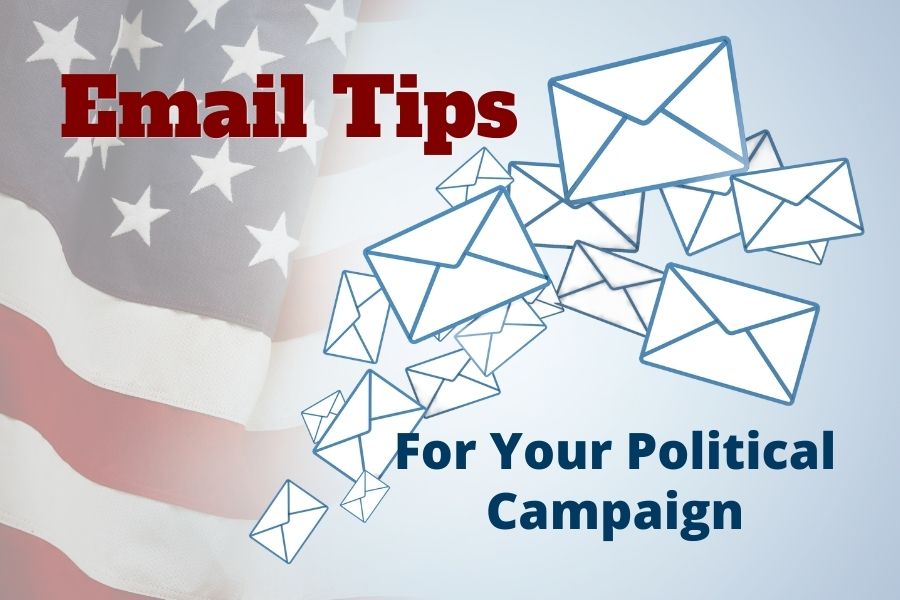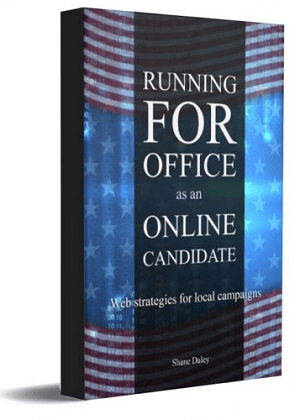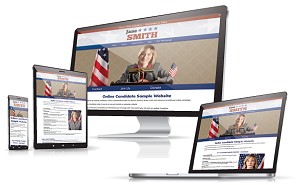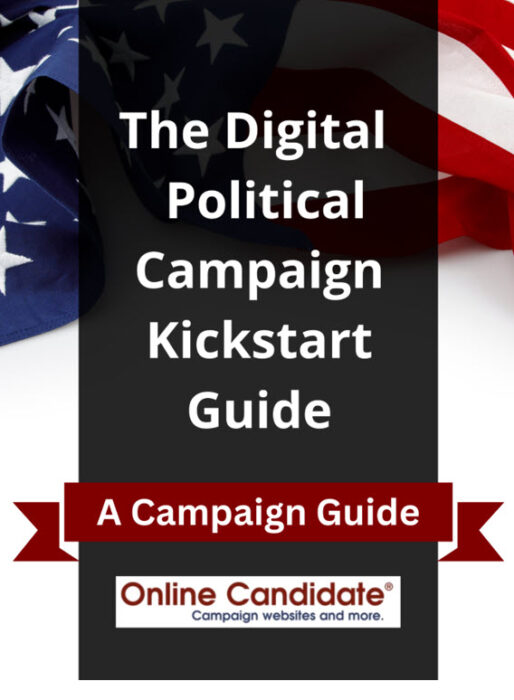Political campaigns are always looking for new ways to reach out to potential voters. They are usually short on time, money, and resources, but they don’t want their message lost in the noise of the election season. This is why many marketing techniques that work well for businesses can be used successfully in political campaigns.
Email marketing is one of the most powerful tools for political organizations to reach out to voters and supporters. It is one of the most effective forms of marketing because it can reach a large number of people at once.
In this article, we’ll talk about some of the best ways to use email marketing for politics.
Political email marketing raises large donations
Political email marketing is a subset of digital marketing that focuses on the use of email to promote political candidates, issues, and voter turnout. In larger campaigns, political email marketers are often guided by campaign managers or digital directors.
Political email has been around a long time now. Even as far back in 2005, 6% of internet users signed up for US presidential candidate email alerts.
The goal of fundraising campaigns is to get people to donate money. The more money they can raise, the more likely they will be successful in their campaign.
Email is a very important tool in this process. It’s not just presidential candidates who raise big money. State and even local candidates are effectively leveraging the power of email. While it is often used to solicit donations for campaigns, email can also be used to promote events, rallies, and other political activities.
A successful fundraising campaign is one that doesn’t just ask for donations, but also provides a compelling reason for why people should donate. To do this, it might be helpful to provide some context about the situation and what could happen if no action is taken.
Best practices for successful campaign emails
Email marketing services are an easy way for political campaigns to reach out to potential voters and make sure they are up-to-date with the latest information about their candidate or cause.
Here are a few best practices that can help you create successful political email campaigns.
- Keep it simple. Make sure that each message is simple and easy to understand. Keep in mind that it should be something that everyone can relate too, not just those who are already on your side.
- Focus on the voter, not you. When crafting your emails, try to take the focus off of yourself and put it on your reader.
- Use emotional triggers to motivate your audience. It has long been understood that emotions are the driving force behind human action. According to neuroscientist Antonio Damasio, 95% of decisions are based on emotion rather than logic. Emotion, over logic, often motivates people to take action.
- Create a call-to-action at the end of your email for the reader to take. Ideally, you should limit your call to action to one per message.
- Make sure that you are sending emails at the right time. If you are sending emails too late in the evening, it will be easier for people to delete them without opening them. Sending an email in the morning or early afternoon will increase your chances of getting a response from your audience.
- Do not send too many messages too often, otherwise people will start unsubscribing from your list because they feel overwhelmed. How many emails are too many? That depends on the message and timing. Sending a few messages a day before an election or primary might not be too much. Emailing multiple times a day six months out could annoy your subscribers.
The success of an email list depends on how well it is curated. Many campaigns segment subscribers into different groups, so that people can be targeted with relevant content and messages that are specific to their interests.
Related: The Money Is In The List – Have You Started Yours?
Top topics for political email newsletters
 You have a campaign newsletter – and you’re even gaining subscribers. Great! From now until the election, you will need to keep your supporters informed and involved.
You have a campaign newsletter – and you’re even gaining subscribers. Great! From now until the election, you will need to keep your supporters informed and involved.
There are two main types of political emails: fundraising and persuasive. Fundraising emails are used by campaigns that have already been established as a viable candidate, while persuasive emails are used by those who want to promote themselves as a viable contender.
Here are topics to keep your campaign emails interesting:
- Recent campaign events: Keep your supporters up-to-date. Don’t forget to include (or link to) photos, press releases and other material related to the event.
- Dates to be aware of: Voter registration deadlines, fundraising deadlines for donations, official voting polls open and close times for the primary or election.
- Information about your opponent. Point out laws or legislation that your opponent has supported or voted for. Use this to contrast your own positions.
- Information about upcoming events: Provide a list of upcoming events, but keep the list short. Save more future events as subject matter for additional newsletters.
- Campaign staffing or supporter news: Mention new citizen groups or where that new, extra-large billboard ad was posted. Let your readers know just how wide your support really is.
- New additions to your website: From new policy papers to photos from the latest campaign event, don’t forget to mention them!
- Endorsements: List endorsements from prominent individuals and organizations. Be sure to add a blurb or two as to why they are supporting your campaign.
- Position statements: Use the opportunity to state your position on an existing issue, new issue or current development.
- Requests for volunteer and financial support: For better response, try to combine fundraising pushes with a specific need or goal.
The best content for any communication should be relevant, timely, and interesting.
Finding the right political email vendor
There are many features to consider when choosing the best email marketing software. These include the price, functionality, and usability. For example, while some offer a free trial, others charge a monthly fee. Some email marketing services offer advanced analytics and segmentation tools while others specialize in social media integration or real-time reporting options.
Here are a few email marketing services that many of our clients use:
- AWeber.com – Free to use. Includes features like autoresponders and split testing.
- MailChimp.com – Free for up to 2,000 addresses. Limited features and send ability with free plan.
- MailerLite.com – Free for up to 1,000 addresses. Includes a library of app integrations.
While free packages are fine for local candidates running for town council, sheriff or school board, state-wide and congressional campaigns often have larger subscriber numbers. They often require paid services.
You can integrate your email signup forms into your Online Candidate website. We also offer optional Aweber or MailChimp account setup for our website clients.
Using automated email messaging for constant supporter contact
Email sequences are a way to organize messages in a series that are sent to the same person or group of people. An email sequence is a series of emails that are sent to subscribers with the intention of nurturing the relationship. The sequence can be as short as three emails or as long as six.
The first email in the sequence is usually an introduction that includes information about the candidate or organization and why the campaign is important. The second email should include more details about the campaign and how supporting the candidate will help the voter. The third email can be where you ask for the reader’s response and provide a relevant call to action, such as volunteering to help or making a donation. Other messages can be about the candidate and where they stand on important issues.
You can set up email automation with many messages. Keep in mind that those messages are automatically sent, so the content should be independent of timing. You should modify or turn off any settings for time-based delivery after Election Day.
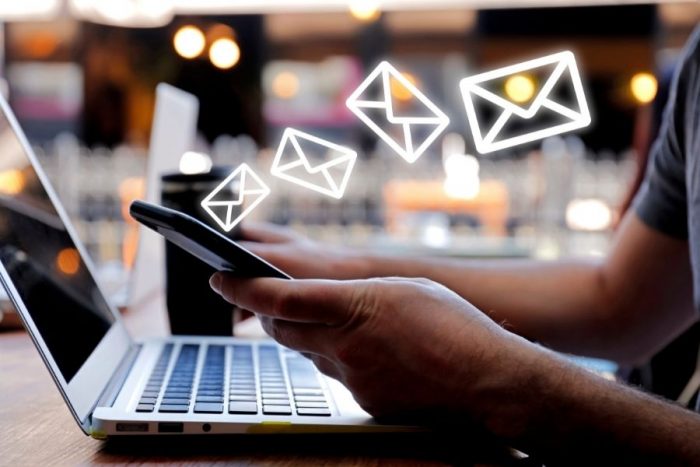
The spam problem – can it apply to politicians?
Most people don’t like receiving unsolicited email. To avoid being seen as spam or being reported as spam, you need to have permission from your recipients before sending them emails. You can get people to sign up for your email list through your political campaign website, your social media accounts, and even offline. You can have attendees at events provide their email addresses, which you can later add to your list.
The goal of an email marketing campaign is to increase the number of people who opt-in to receive messages from your company. This is important because it will help you avoid being classified as spam.
There are many reasons why your email may be classified as spam, including the following:
- Your content isn’t engaging enough for people to want to read it. Your messages don’t get opened, signaling to some email hosts that the message may be unwanted.
- You’re sending too many messages that are similar in content or frequency, which can lead recipients to unsubscribe or mark your messages as spam.
While CAN-SPAM covers e-mails promoting commercial products or services, a poor open rate or high unsubscribe rate can have a negative effect on your own deliverability. This means that your emails might not be delivered to the inbox of the recipient or filtered to a junk mail folder.
Faqs
How do you measure the success of a political email marketing campaign beyond open and click rates?
To measure the success of a political email marketing campaign, look beyond open and click rates. Consider conversion rates, such as donations made, event sign-ups, or volunteer registrations. Analyze email forwarding rates to gauge message resonance. A/B testing between messages will you refine subject lines and find out what content really resonates with subscribers. Track unsubscribe rates to manage list health.
What are the legal considerations and compliance requirements for political email marketing?
Legal considerations for political email marketing vary by region. In the U.S., the CAN-SPAM Act outlines requirements for commercial emails, which can apply to some political messaging. Ensure you have explicit consent to email recipients. Always provide a clear opt-out mechanism. For international campaigns, be aware of stricter laws like the GDPR in Europe, which demands rigorous data protection measures.
How can political campaigns effectively segment their email lists to tailor messages more personally to different groups of voters?
Segmenting political email lists improves messaging personalization. Start by collecting subscriber data. This can be through the sign-up forms, where you may ask for interests or location. You can also segment by engagement as to how often or what types of messages subscribers open. This information can be used to create segments, or groups of email addresses. Tailor messages to each group’s interests and behaviors. For example, send targeted policy updates to those interested in specific issues. Personalized emails tend to have better open rates and engagement.
Conclusion
Email marketing is a powerful way to reach voters and potential supporters. It enables campaigns to send out personalized messages in an inexpensive, timely, and scalable way. It is one of the most cost-effective channels for getting in touch with supporters and potential voters.
Want to learn more about digital campaigning? Find more ideas and tactics in our book, Running For Office as an Online Candidate.
« Read Our Interview on WebsitePlanet.comPrimary vs. General Elections: Tailor Your Digital Campaign for Success »

